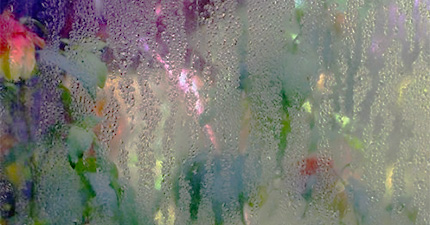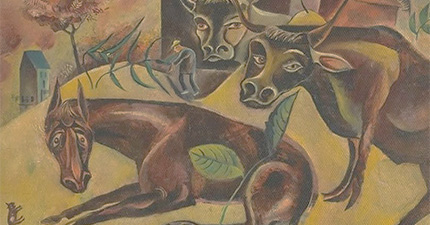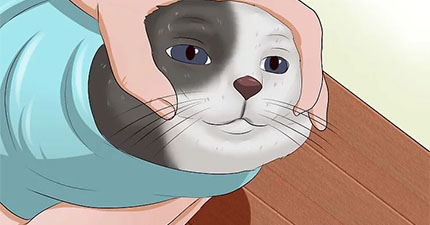This article is an exploration of shame. I like to think of this emotion or this array of emotions as an unnamable emotion. I’ll try to illustrate the reasons why here.
Every book I have read about shame begins with the anthropological. There’s a very influential definition of shame that comes from anthropology. The working theory is that the world can be divided up into three cultures: guilt culture, shame culture, and fear cultures. In this theory, these are the three ways that we teach children how to obey the social order. Ruth Benedict is often cited when discussing this theory since her book, The Chrysanthemum and the Sword, popularized it. In that book, she writes about how Americans have a guilt culture and about how the Japanese have a shame culture.
The guilt-shame-fear spectrum theory says that western cultures are guilt based, the Asian cultures are shame based, and that African cultures are fear based. This is how the world is carved up in the theory. It is influential enough that, even in places where the geopolitics of the theory are left uncited, the definitions of guilt and shame and fear and the differences between them often allude to vague cultures that are supposedly based in one of the three emotions.
The theory has been influential enough that, when we name white guilt we usually do use the term guilt and not shame or fear. A quick google search trend look tells me that the term “white guilt” is used twice as often as “white shame.” When we name feelings of ostracization from a racialized experience, we often talk about racial shame or racial fear. We don’t usually talk about racial guilt even if some of our feelings about surviving racism can feel similar to survivor’s guilt.
My question is—how distinguishable are these feelings?
It’s odd. The texture of fear that we feel when we take a known risk like riding a rollercoaster or telling someone we know like us back that we like them can feel very different from the fear that something is watching you at night. The fear that something is watching you at night can feel very different from the fear of a spider. The fear of a spider can feel very different from the fear of being pushed out of a friend group or the fear of being shamed.
There’s the spine tingling fear. There’s the fear that makes us want to retch. There’s the frozen kind of fear, feeling cold and even numb. There’s fear that makes us need to scream. There’s silent fear, fear that can’t be expressed because the expression of fear is part of the fear.
And, yet, we call all of these things fear. All of these textures are classified under fear.
Of course, we do not treat these different types of fear the same. How could we? The fear of a spider is different from the fear of a woman walking alone at night. The fear of a woman walking alone at night is different from the fear of a man walking close to her, afraid that she will profile him and call the cops. We do not pretend that these different fears are the same emotion.
Not all shame is the same or equal either. There is the shame of internalizing the inferiority that was taught to you. There is the shame of realizing that your supposed superiority is false and violent. These two feelings are sometimes both called shame but they are not the same emotion.
The difference that is often cited as the difference between guilt and shame is that guilt knows morality while shame is without. Guilt is the creeping suspicion that you did something morally wrong. The existence of a guilt culture implies the existence of a culture that is also overladen with morals. Shame, on the other hand, is about humiliation and loss of status. The existence of a shame culture relies on the assumption that there are some cultures that are heavy with status. Fear, on the other hand, is retributive. If a guilt society is one that cares too much about morals and a shame society is one that cares too much about status then a fear society is one that overemphasizes dominance.
It’s interesting. Remember that there are racial categories associated with each of these imagined societies in the original theory, that the implication is that westerners care too much about morals, that Asians care too much about status, and that Africans care too much about dominance.
What a load of bullshit! If the imaginary geopolitics behind the theory doesn’t hold up, then I’m not so sure about the definitions of each separate emotion within the application of the theory. I’m not so sure that there is a difference between shame and fear. What kind of fear? I’m not so sure that there is a difference between guilt and fear. Guilt about what?
There aren’t enough words that exist to describe our emotions. The words that do exist tend to try to describe our experiences for us. Your experience of an emotion will always disobey the definition of that emotion.
It’s alright to use these words. My advice to you is to watch carefully how they are used and to make your own opinions about their usage. Watch to see if we use the word shame when we blame something and if we use the word guilt when we imply that someone is capable of holding onto their morality on their own. Watch for if the shame that a survivor carries is conflated with the shame inherent in accountability through purposeful vagueness. Watch for whether the word fear implies the domination of something larger and the shrinking of the fearful thing. If words express our sentiments imprecisely, they still conform to our precise strategies.
1 of 188
>>>


